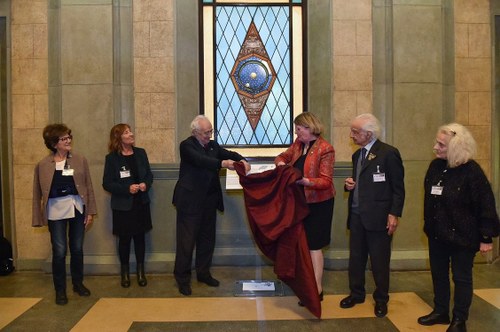The Academy of Sciences of the Bologna Institute where Galvanism was discovered

In the Accademia delle Scienze dell’Istituto di Bologna, Luigi Aloisio Galvani (1737–1798), physician, physicist, biologist and philosopher, discovered the physiological action of electricity by observing that the muscles of dead frogs’ legs twitched when struck by an electrical spark. The phenomenon was named “Galvanism” and its discovery properly credited to Galvani. Today, the study of galvanic effects in biology is called electrophysiology.
The Academy, founded in 1690, joined the Institute of Sciences in 1711. Beside Galvani, it initially ranked among its members Daniel Bernoulli, Anders Celsius, Faustina Pignatelli, Émilie du Châtelet, Georges Louis Buffon, Laura Bassi, Mikhail Lomonosov, Lazzaro Spallanzani, Alessandro Volta, Antoine Lavoisier, Pierre-Simon Laplace and many other great Italian and European scientists and philosophers, including Voltaire.
In the 19th century, after its closure in the Napoleonic age, the Academy resumed its fame, and in the 20th century it included distinguished scientists such as Dmitri Mendeleev, Niels Bohr, Maria Skłodowska-Curie, Albert Einstein and Guglielmo Marconi. At present, the Academy can again boast large areas of excellence in both its classes of “Physical Sciences” and “Moral Sciences”.

On November 7, 2019, on the occasion of the Passion for Science conference, the Academy was awarded the plaque of “Historic Site of the European Physical Society (EPS)” as the place where Luigi Galvani discovered Galvanism.
The full list of EPS Historic Sites can be found on the website of the European Physical Society (EPS).